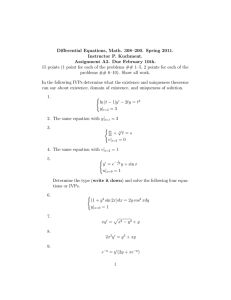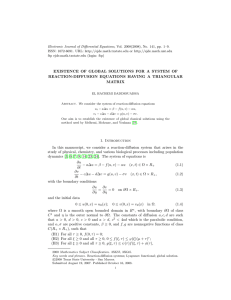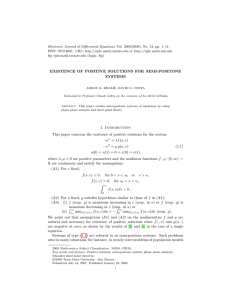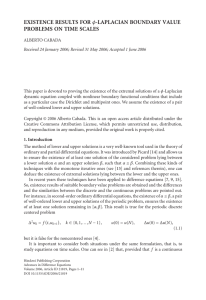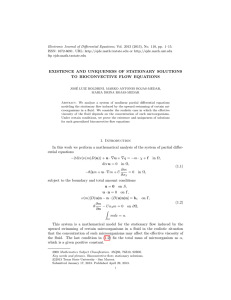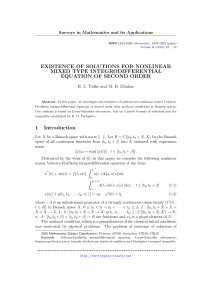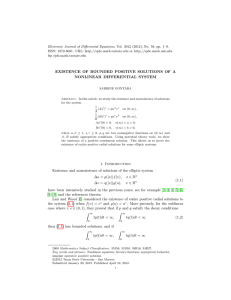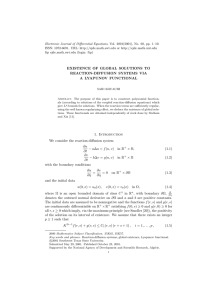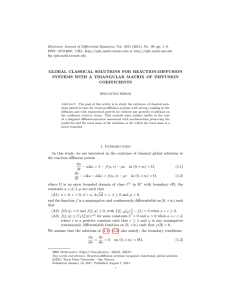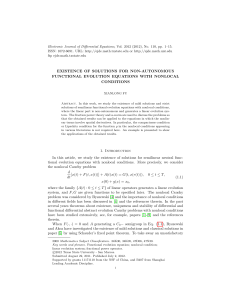Abstract. We consider the question of the existence of a... β p r
advertisement
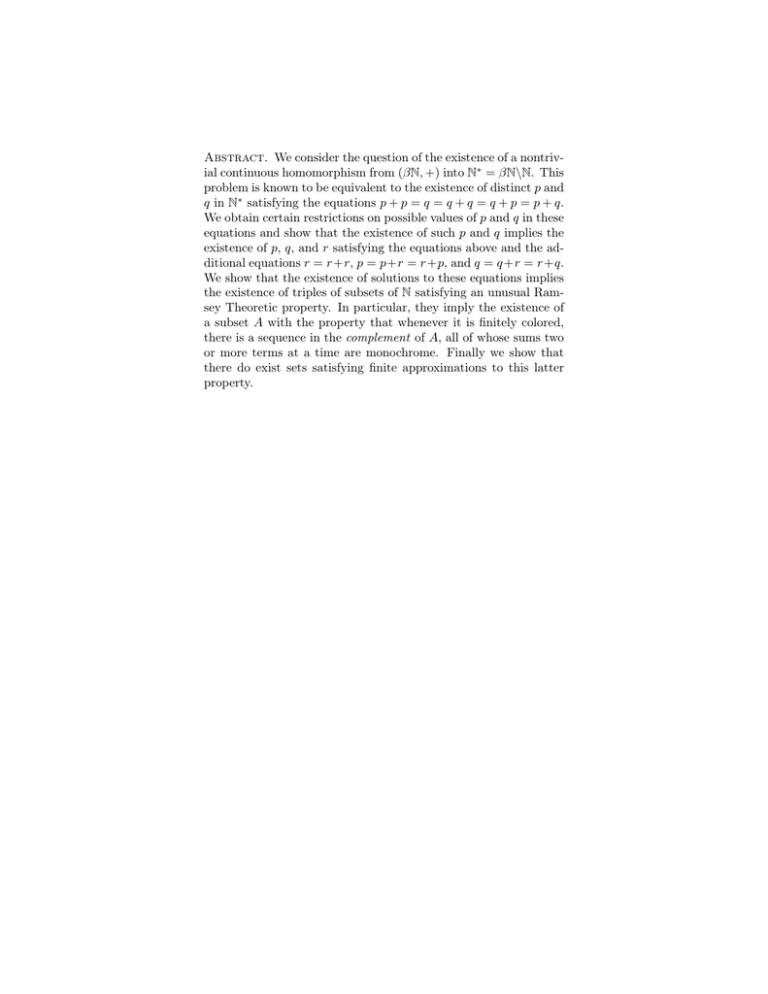
Abstract. We consider the question of the existence of a nontrivial continuous homomorphism from (βN, +) into N∗ = βN\N. This problem is known to be equivalent to the existence of distinct p and q in N∗ satisfying the equations p + p = q = q + q = q + p = p + q. We obtain certain restrictions on possible values of p and q in these equations and show that the existence of such p and q implies the existence of p, q, and r satisfying the equations above and the additional equations r = r+r, p = p+r = r+p, and q = q +r = r+q. We show that the existence of solutions to these equations implies the existence of triples of subsets of N satisfying an unusual Ramsey Theoretic property. In particular, they imply the existence of a subset A with the property that whenever it is finitely colored, there is a sequence in the complement of A, all of whose sums two or more terms at a time are monochrome. Finally we show that there do exist sets satisfying finite approximations to this latter property.

